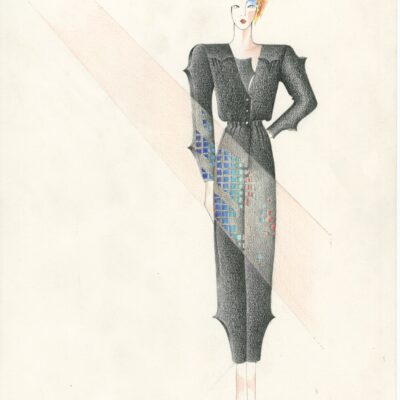
Designers 06.09.2022
01.09.2017
artdesignexhibition
How at Centraal Museum dealt with the concept of ‘the new.’
Each time artists and designer feature, in their practice, elements of existing styles of the past, be it distant or more vivid, it is possible to talk about ‘Neo.’ Neo, in this sense, is a reinterpretation of the past, re-read with the eyes of the contemporary. In 2003, the continuing re-use of past styles in art, fashion, music and design inspired some reflections that led into the exhibition ‘NEO’, showcased at the Central Museum in Utrecht.
The exhibition NEO was displayed the Central Museum from the 27th of September 2003 to the 1st of April 2004. The exhibition showcased examples of what were considered the ‘new styles’ in the last 250 years. After the excavation of Pompeii and Herculaneum in the eighteenth century, in all aspects of culture, from visual arts to design, pop culture and music, it is possible to retrace the references in the reuse of classical style elements. In an ever faster way, artists, architects and designers used style features from Renaissance, Baroque, Rococo and Exotic cultures.
NEO articulated the meaning of the notion “neo” in the broadest sense. Curator Frans Haks, then the director of the Groninger Museum, showed that neo consisted not only of the “famous” neo-styles such as neoclassicism or neogotics; nature can also function as a neo subject, just as exoticism can be a neo style. NEO not only included neo-styles in visual arts or crafts, but also in architecture and film. In the nine rooms that composed the exhibition path, aspects of various neo-styles were thoroughly explored. The exhibition represented a journey amongst the most varied facets of the neo-culture from 1750 to the present.
Neo means something new, but neo stands also for the imitation of existing styles. The exhibition presented many famous artworks made by copying, enlarging, reducing and perfecting. In 1769, English ceramist Josiah Wedgwood saw a gap in the market and asked for a patent on ‘encaustic collection’, a method of perfect imitating red-headed Etruscan vases. He also developed ‘biscuit’ as a light and cheap substitute for marble, and ‘basalt ware’ for bronze. This led to a wide range of imitations of precious originals in cheap contemporary materials. And that happens until today. A good example of this is what Italian designer Alessandro Mendini did in 1978, when he developed some chairs looking at existing models of world-famous designers such as Gerrit Rietveld.
Another section focussed on the way Neo is also about giving new features to existing designs. For example, an image of the Italian artist Canova can be transformed into a flower basket and a Greek column will form a knife handle. A highlight of the exhibition was the room in which a large number of table pieces were presented in different ‘neostiles’ like classical and rococo. It was shown how neostijes penetrated into the royal food culture at home and abroad.
Neo also had a connection with nature. Since the eighteenth century, the exact imitation of fruits, plants and animals in porcelain, glass, ivory, textile and metal became all the rage. Nature inspired lush decorations, such as in the glassware of Gallé and Lalique, embellished with exuberant plant and animal motifs. The fact that nature continues to attract modern artists was represented, in the exhibition, by Andy Warhol’s series of silk prints entitled ‘Flowers’ in 1970.